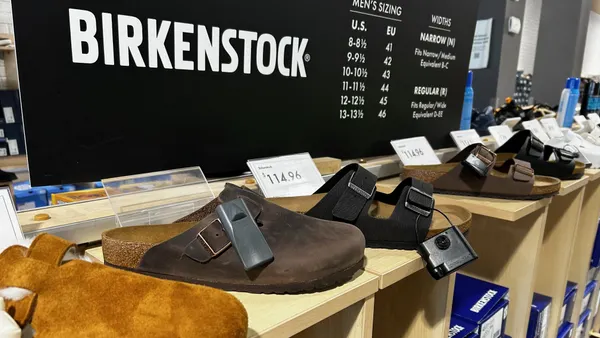Dive Brief:
- Walgreens Boots Alliance announced it will buy Rite Aid Corp. Tuesday evening. The Wall Street Journal reported earlier on Tuesday that Walgreens was in "advanced talks" to buy Rite Aid.
- The deal would consolidate the second and third largest drugstore chains in the U.S.
- The deal values Rite Aid at $9.4 billion — a 48% premium on Rite Aid's approximate $6 billion value at the close of the markets on Monday. Including assumed debt, the deal is valued at a total $17.2 billion.
Dive Insight:
The now-confirmed deal between Walgreens and Rite Aid comes at a time of great consolidation and activity in the retail health and wellness space. The deal is one of the first major moves from new Walgreens Boots Alliance CEO Stefano Pessina, former chairman of Alliance boots before its merger with Walgreen Co.
The boards of both companies have already approved the deal, according to the release, although the deal is still subject to approval by Rite Aid shareholders and regulators. Walgreens expects to close the deal in the second half of 2016.
Walgreens said in the release that it "expects to realize synergies in excess of $1 billion." The retailer said Rite Aid would become a subsidiary under the deal "and is expected to initially operate under its existing brand name." But it also noted it "plans to further transform Rite Aid’s stores to better meet consumer needs."
The Rite Aid acquistion and other dealmaking in the retail health space are being influenced by a new financial picture in the healthcare industry ushered in by the Affordable Care Act, as retailers — including big-box stores, grocery stores, and drugstore chains — look to expand their offerings beyond the traditional pharmacy services and beauty products.
Health services are one way for traditional brick-and-mortar retailers to ensure that their customers don’t gravitate to the many drugstores that are also increasingly offering clinics, health screenings, basic health care services, medication management, and health products. Any services that bring customers into stores will help retailers compete with the growing number of e-commerce upstarts that are eating away at their relationship with customers.
Walgreens and CVS are the two biggest players in the space, together controlling over half of the drugstore market in each of the largest 14 metro-areas in the U.S. Both retailers have been boosting their services and product offerings with recent acquisitions.
In June, CVS announced that it would be buying Target’s pharmacy and clinic businesses for $1.9 billion, following an announcement that the drugstore retailer would be acquiring drug fulfillment company Omnicare for $10.4 billion. CVS has put in place initiatives to help bolster its clinical services, including an online MinuteClinic that helps customers explore preventative services.
In late 2014, Walgreens merged with UK-based drugstore chain Boots Alliance and bought Liz Earle cosmetics from Avon in July, as it attempts to position itself as a drugstore retailer offering both high-end and lower beauty products.
Earlier this year, Walgreens also announced that it would be shuttering 200 U.S. stores by 2017 in a cost-cutting operation that includes streamlining IT operations and restructuring field and corporate operations after its acquisition of Boots Alliance.
Rite Aid, meanwhile, recently expanded its healthcare services with a February acquisition of pharmacy benefit management company Envision Pharmaceutical Services (also known as EnvisionRx) for $2 billion.
But other retailers — including the biggest, Wal-Mart — are also edging into the space as they see opportunity open up.
Wal-Mart recently announced it would offer free health screenings like blood pressure readings at all of its U.S. stores in a one-day event that Wal-Mart called a nationwide health fair. The country's biggest retailer also started to place protein bars in prominent places and near point-of-sales counters, moves that signal Wal-Mart's intentions in the retail health space.
News of the Walgreens-Rite Aid deal nearing completion sent Rite Aid stock shooting up around 40% after the Wall Street Journal report came out. Walgreens stock went up around 4%-5% on the news.













